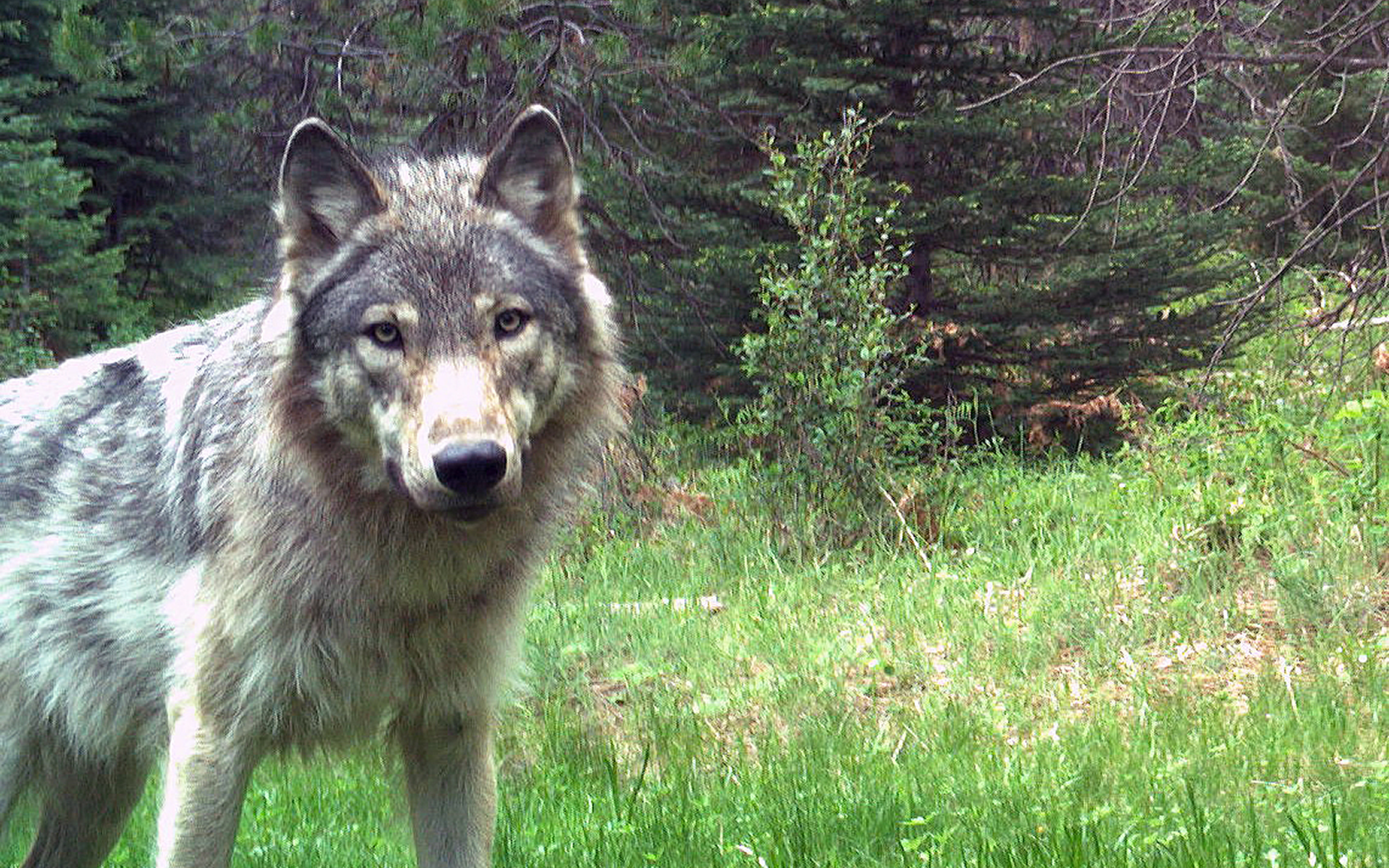FOR IMMEDIATE RELEASE
April 20, 2022
Contact:
Bethany Cotton, Cascadia Wildlands, bethany@cascwild.org, 503.327.4923
Species’ Recovery Undermined by Poaching, ODFW Killings
EUGENE, OR — Conservationists are concerned about the plateau of Oregon’s wolf population in 2021, largely resulting from poaching and agency killings. The Oregon Department of Fish and Wildlife’s (ODFW) annual wolf population report, released late yesterday, shows Oregon’s wolf population grew by the lowest percentage (just over one percent) since wolves naturally returned to the state. The 2021 minimum population of 175 wolves increased by just two animals from the 2020 minimum count of 173. While 20 packs were identified, just 16 met the criteria of breeding pairs (an adult female and adult male with at least two pups surviving to December 31st of their year of birth), one fewer than at the end of 2020. Eight additional small groups of two to three wolves were identified, though these groups are not considered packs because a pack is defined as four or more wolves traveling together in winter. The percentage of wolves in Oregon in the western management area also did not grow between 2020 and 2021, with just 13% of Oregon’s wolves in the western portion of the state.
Known wolf deaths sharply increased from previous years. Of the 26 confirmed wolf deaths, 21 were caused by humans. Eight wolves were illegally killed in four poisoning incidents. A $50,000 reward remains in place for information leading to a conviction for the poisonings. ODFW also killed eight wolves — nearly the entire Lookout Mountain pack — including several 12-week old pups incapable of predating on livestock, an unprecedented action.
“Nearly three times as many wolves died in Oregon in 2021 than 2020, with fully triple the human-caused mortality,” said Bethany Cotton, conservation director with Cascadia Wildlands. “We are deeply concerned about the impact of unprecedented poaching and state sanctioned wolf killings on Oregon’s wolves. State management if failing this keystone species: we need restored federal protections statewide.”
None of the poaching incidents have yet resulted in arrests. Oregon recently hired a new wildlife poaching prosecutor, housed in the state Department of Justice. Conservationists are calling on ODFW and state law enforcement to work closely with the prosecutor to ensure poachers are held accountable for their crimes. At least three additional poachings have occurred thus far in 2022.
“Oregon’s wolf population simply cannot sustain such high levels of human-caused wolf mortality,” said Nick Cady, legal director with Cascadia Wildlands. “The state needs to both seriously prosecute poachers and stop killing wolves to subsidize commercial livestock operations.”
Wolves in Oregon no longer have state Endangered Species Act protections, and are managed under the Oregon Wolf Plan, which designates two management zones based on specific criteria. Oregon’s wolves were likewise without federal Endangered Species Act (ESA) protections for the entirety of 2021. In February 2022, federal ESA protections were restored to wolves in the western two thirds of the state when a federal court threw out the Trump administration’s removal of protections. The court agreed with plaintiffs, including Cascadia Wildlands, that removal of federal protections was not grounded in science.
The one piece of more positive news in the report is that wolves expanded into four new “areas of resident wolf activity” in Jefferson, Klamath, Grant, and Union Counties.

